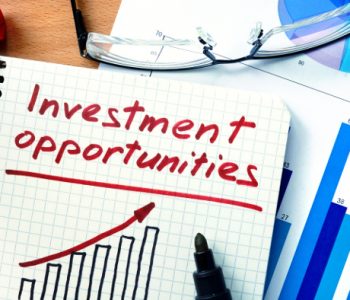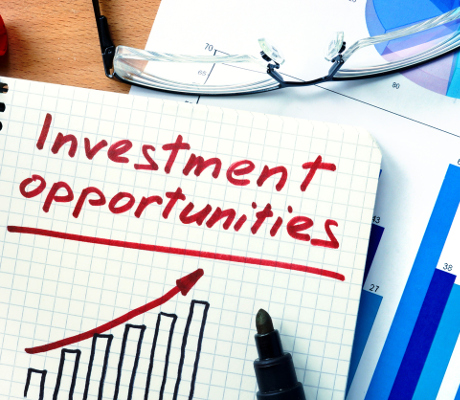How to Invest in Dividend ETFs: A Guide

Why Invest in Dividend ETFs?
Investing in exchange-traded funds (ETFs) saves investors a ton of time, compared to researching stocks on an individual basis.
When a share or unit of an ETF is purchased, the investment is made into a portfolio of different dividend stocks. Most dividend ETFs hold more than 30 stocks in the portfolio.
As a retail investor, is it quite difficult to own a portfolio that is diversified and, many times, one position of the portfolio accounts for a large percentage. It can be stressful, as one position could do more harm than good and result in a negative return.
Owning an ETF adds to one’s diversification, as well as protects the invested capital. For example, if one stock in a dividend ETF portfolio falls out of favor, it will not have a huge impact on the overall return, since the rest of the stocks in the portfolio will offset the negative return.
Dividend ETF investing is an appealing investment opportunity for small investors because the investment is spread across many different companies and sectors. Purchasing ETFs is quite easy and, in fact, no different than buying a stock through a broker. Just like a stock, there is a ticker and purchase price. Then, when the purchase is completed, you can sit back and collect the dividend. And that is how to invest in dividend ETFs.
A key advantage of owning a dividend ETF is that there are professionals making the decisions regarding where the capital of the ETF should be invested. These portfolio managers are watching the markets on a daily basis, so if something does turn sour, quick decisions are made to preserve the capital within the ETF.
Owning an ETF does come at an annual cost, given the portfolio manager needs to be paid. However, the adjustments that a pro makes are because a stock has run up higher and has become a larger percent of the portfolio. Even though this costs money, having someone else manage cash on your behalf takes out the emotions of investing.
When investing, the most important information to know is what the ETF’s holdings are. It is quite easy to find this out, because many companies update this information on a weekly or monthly basis, if not daily.
If you have new capital to invest into the markets, the choice is quite easy to make, because only one dividend ETF needs to purchased, rather than dividing the capital and buying several individual stocks. Purchasing a large number of stocks at one time could eat into the capital because of the commission cost that is charged by the brokers, as opposed to owning a single ETF.
Many providers of dividend ETFs give investors the option to accumulate more shares or units without incurring a commission from a broker. This is done through what is known as a dividend reinvestment program (DRIP). With a DRIP, the income earned from the dividend that is not needed can be put back into the dividend ETF. This is beneficial over the long term because of compounding, and will result in the money working for you, rather than the opposite situation.
How to Choose Dividend Stock ETFs
Choosing an ETF is no different then looking into a dividend stock. It all comes down to your personal goals and the sectors that you are interested in. I will provide some tips for finding the right dividend stock ETF that would suit your needs so you aren’t overwhelmed at first.
The provider of the ETF is the most important aspect to determine before any investment is made. That’s because companies with a long history have a greater chance of remaining in business in the future, with a track record that asserts this.
When it comes to data, the most important number is the assets under management. A larger asset base provides more certainty that the company will continue to manage money efficiently down the line. This is just like looking at a stock and its market capitalization size.
Once this part of the research is complete, take a look at the holding of the dividend ETF. This is very important because if you are working towards retirement, you may want to stay away from a high-risk dividend ETF that is invested in commodities. Or, if you are younger, you may wish to avoid a conservative dividend ETF. It depends again on what your goals are and how quickly you would like to achieve them.
Next is the dividend payment, specifically if the portfolio continues to pay a dividend. Researching the company’s history makes predicting the future possible when it comes to how the dividend payment will look. For example, if the dividend increases on a continuous basis, there is a greater probability of another increase in the future. Or, if a special dividend is paid annually, it could appear more likely to happen again. There are many different scenarios to consider.
Lastly, the annual cost of the fund must be considered. This is paying for the team that is making the investment decisions. A very high fee could eat into your long-term profits so, for investors, the lower the fee, the better.
I have gone through all these steps and have selected five dividend ETFs to consider owning, which you can find below.
5 Best Dividend Stock ETFs
| ETF Symbol | ETF Name | (AUM) in billions | Price | ||
| VIG | Vanguard Dividend Appreciation ETF | $22.20 | $86.10 | ||
| DVY | Ishares Select Dividend ETF | $16.90 | $89.49 | ||
| SDY | SPDR S&P Dividend ETF | $15.00 | $86.48 | ||
| SCHD | Schwab US Dividend Equity ETF | $4.70 | $43.85 | ||
| DLN | WisdomTree LargeCap Dividend ETF | $1.90 | $80.75 |
1.Vanguard Dividend Appreciation ETF (NYSEARCA:VIG)
Vanguard Dividend Appreciation ETF has been around for more than 10 years and is the largest dividend stock ETF, having 30% more assets under management than the second-largest.
Vanguard is a diversified ETF that is invested in many different sectors, including the industrial, consumer defensive, and healthcare sectors. The dividend has increased 21% over the last year.
Its portfolio includes dividend growers such as Microsoft Corporation (NASDAQ:MSFT), Johnson & Johnson (NYSE:JNJ), and PepsiCo, Inc. (NYSE:PEP). The companies are also generally large-cap, U.S.-based companies with a presence around the world.
The volatility is less than the overall market. As an investor, this is very important, because these are companies with a history of increasing their earnings over the long term.
Annual expenses for owning VIG ETF are 91% lower than the industry average, with a management expense ratio (MER) of 0.09%. This would mean that for each $100.00 that is invested, $0.09 will be used to pay for the incurred overhead and trading costs.
2. iShares Select Dividend ETF (NYSEARCA:DVY)
DVY ETF has a history of more than 13 years of investing on behalf of clients. This ETF focuses on mid-cap stocks that are trading at a discount when compared to their peers or the index.
The dividend yield is higher when compared to VIG because the companies that are held in the ETF are higher on a risk spectrum, based on how the capital is invested. Approximately a third of the investable capital is invested in energy, financial services, and the consumer cyclical sector. This is why it’s important to research these details, as noted earlier, because the sectors may not meet your personal requirements.
The DVY ETF’s top holdings provide further evidence of this, as they include Chevron Corporation (NYSE:CVX), Caterpillar Inc. (NYSE:CAT), and Philip Morris International Inc. (NYSE:PM).
3. SPDR S&P Dividend ETF (NYSEARCA:SDY)
The focus of SPDR S&P Dividend ETF is large-cap value investing, looking only at companies that the market is ignoring and trading at a discount. The focus when comparing this ETF to an index is on this ETF following the S&P High Yield Dividend Aristocrats Index.
When it comes to the fund itself, there is no holding that represents more than 2.2% of all invested capital. The top holdings are Target Corporation (NYSE:TGT), AT&T Inc. (NYSE:T), and International Business Machines Corp. (NYSE:IBM).
Considering the above names, it makes sense that the SDY ETF pays a higher dividend yield than the S&P 500 index. These companies have a long history of growing their dividend payouts each year, so the yield on cost for the investment within the fund returns a higher dividend over time.
Holders of SDY have been able to enjoy the growing dividend payments. Since the inception of the fund in 2005, the dividend payment has doubled.
4. Schwab US Dividend Equity ETF (NYSEARCA:SCHD)
SCHD ETF has the lowest management expense ratio, at just 0.07%, accounting for $0.07 per $100.00 that is invested into this fund. This is very important because, as a long-term and patient investor, cost could hurt the overall return.
As for the ETF holdings, nearly two-thirds of the investments are made in the consumer defensive, technology, and industrial sectors. These three have been the best-performing sectors for returning money by way of capital gains. These sectors hold such heavy weight because this ETF tracks the Dow Jones U.S. Dividend 100 Index. This index focuses on the top 100 companies that are based in the U.S. and have a track record of increasing their dividend.
5. WisdomTree LargeCap Dividend ETF (NYSEARCA:DLN)
Of all the ETFs that I am suggesting to look at today, DLN ETF has the lowest amount of capital being managed. But, regardless of the size of the fund, it should still be considered as an investment.
The ETF has a record of more than 10 years, with a portfolio of companies that have a long history of rewarding shareholders, such as Apple Inc. (NASDAQ:AAPL), General Electric Company (NYSE:GE), and Verizon Communications Inc. (NYSE:VZ).
Apple is a company that is very familiar to investors, being one of the most successful investments of all time. When it comes to Verizon and GE, the two have paid a dividend for over 30 years and 100 years, respectively. And these are just a few such companies in DLN’s portfolio.
Final Thoughts on How to Invest in Dividend ETFs
As you can see above, when it comes to dividend ETFs, there are great investments available. Sometimes a stock that has great potential for returns could be missed, whether it be due to using the wrong tools to research companies, a lack of capital for further investments, or because you simply weren’t paying attention. But, by owning any of the above dividend ETFs, there will be less of a chance of that due to the professional assistance.
Also consider that dividend ETF investing is based on your own experience and educational background. The investing field is changing very rapidly and it could be difficult if you are not on top of everything going on.
Lastly, the biggest benefit of owning a dividend ETF is the diversification that comes from not relying on hitting a home run with one or two stocks. That possibility still exists with owning an ETF, but the downside risk is reduced much more when owning an ETF over an individual stock.











